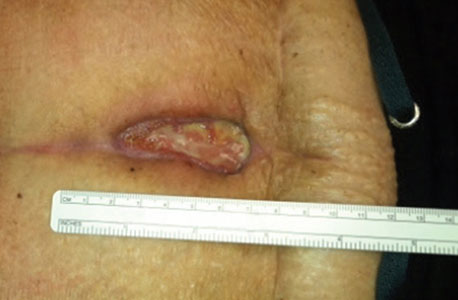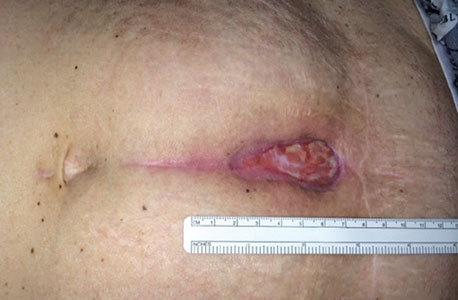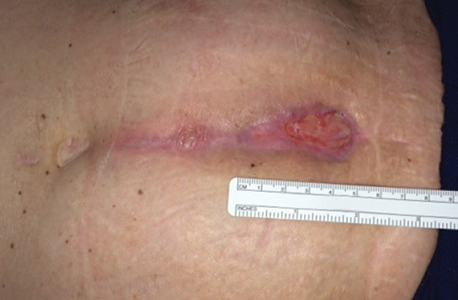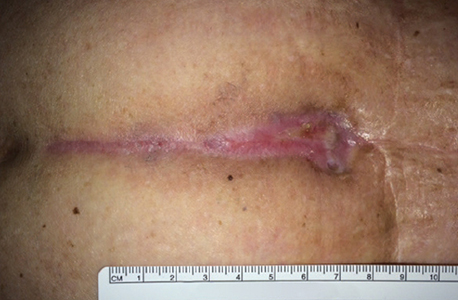Case study: Post-surgical abdominal wound
Wound type:
Non-healing surgical wound
Patient
44-year-old female
History
Squamous cell carcinoma of the cervix, has undergone multiple abdominal surgeries, radiation therapy, and is on chemotherapy with severe anorexia and fatigue
100%
reduction in slough and 100% re-epithelialization in 47 days*
*Individual results will vary
Wound presentation
- The patient presented with a complex abdominal wound with deep tissue involvement and undermining. 95% of the wound had slough and no granulation tissue was present. Sharp debridement was deemed inadvisable.
Treatment
Application of SANTYL Ointment daily for debridement.
Individual results will vary
Baseline Day 1
- Wound measures 9cm x 3.5cm (undermining at 6 and 12 o’clock positions)
- 95% necrotic tissue (yellow slough)
- Daily application of SANTYL Ointment with dressing was initiated
Day 6
- Wound measures 6.5cm x 2.5cm (minimal undermining)
- New granulation tissue present
- 20% re-epithelialization
- 80% slough
- Continued with daily SANTYL Ointment application and dressing changes
Day 20
- Wound measures 3.5cm x 2.1cm
- 20% granulation tissue present
- 40% re-epithelialization and reduction in wound size
- Continued with daily SANTYL Ointment application and dressing changes
Day 47
- 100% reduction in slough
- 100% re-epithelialization
- Discontinued application of SANTYL Ointment
Result
100%
reduction in slough and 100% re-epithelialization in 47 days*
*Individual results will vary
Download patient case study: Post-surgical abdominal wound





